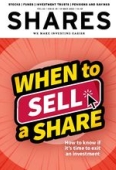Archived article
Please note that tax, investment, pension and ISA rules can change and the information and any views contained in this article may now be inaccurate.
Why bond and equity investors are pricing in very different futures

The big disconnect between what bond markets are implying and what equity markets are expecting is widening with recent data suggesting the bond side may be gaining the upper hand as signs of a weakening economy filter through.
Economists at the US Federal Reserve are forecasting a shallow recession which, for all intents and purposes, means the Fed sees the economy achieving a soft landing.
Equity investors appear to agree and have so far, at least shrugged-off recession concerns. Investors can take comfort in a surprisingly robust first quarter earnings season.
According to Factset 78% of companies beat estimates compared with a 10-year average of 72%, which is also the highest percentage since the third quarter of 2021.
At the other end of the debate, bond markets have been signaling a recession for almost a year based on yield curve inversion, a measure which has historically predicted recessions.
Over the last 50 years the average lag between the US yield curve first inverting and the economy entering recession has been 12 months according to Statista.
Yield curve inversion refers to longer-dated bond yields moving below shorter-dated yields. It normally signals bond investors believe the economic growth outlook is deteriorating.
The two-year, 10-year US treasury (government debt) yield curve inverted in July 2022 which implies the US economy could be entering a recession soon.
Evidence supporting the bond market’s view has started to mount up. On 11 May jobless claims increased by 22,000 to 264,000, the biggest rise in one and a half years.
Meanwhile, consumer confidence plummeted to a two-year low according to the University of Michigan survey (12 May) driven by concerns the US debt ceiling debacle could push the economy into recession.
On 15 May the Empire State Manufacturing survey came in much worse than economists were expecting and signaled a sharp slowdown in business activity in New York state.
President and founder of Rosenberg Research, David Rosenberg tweeted that components of the the New York Empire State index were consistent with a 43.5 ISM print which is an ‘iron clad recession indicator if there ever was one’. ISM is the Institute of Supply Management non-manufacturing index. A reading below 50 means the economy is in recession.
While stock markets have had minor wobbles in recent weeks, they have also shown remarkable resilience. The S&P 500 index is higher today than before the regional banking crisis in March which was set in motion by the collapse of Silicon Valley bank.
The benchmark S&P 500 is only 15% from its all-time highs while UK and European indices are within 3% to 5% of all-time highs.
Important information:
These articles are provided by Shares magazine which is published by AJ Bell Media, a part of AJ Bell. Shares is not written by AJ Bell.
Shares is provided for your general information and use and is not a personal recommendation to invest. It is not intended to be relied upon by you in making or not making any investment decisions. The investments referred to in these articles will not be suitable for all investors. If in doubt please seek appropriate independent financial advice.
Investors acting on the information in these articles do so at their own risk and AJ Bell Media and its staff do not accept liability for losses suffered by investors as a result of their investment decisions.
Issue contents
Feature
Great Ideas
News
- New Vodafone CEO takes no-nonsense approach but it will be enough to win over investors?
- Why bond and equity investors are pricing in very different futures
- End nears for Purplebricks’ life as a public company after Strike’s £1 bid
- Are private equity investors turning cold on UK companies?
- Richemont on the rise as China reopening boosts shares
 magazine
magazine








